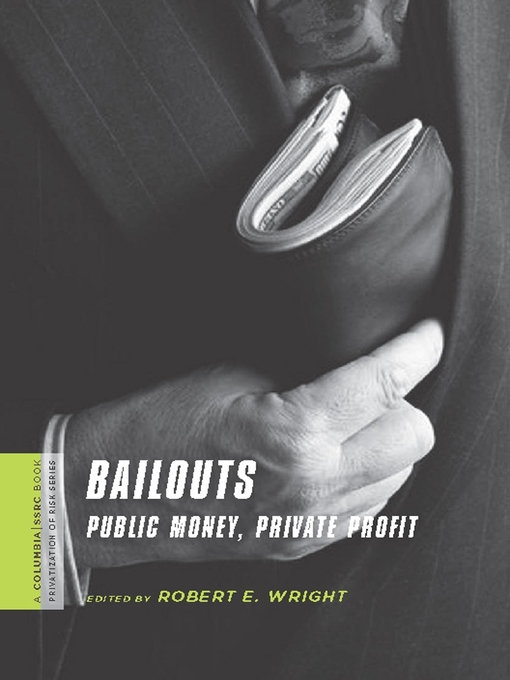Today's financial crisis is the result of dismal failures on the part of regulators, market analysts, and corporate executives. Yet the response of the American government has been to bail out the very institutions and individuals that have wrought such havoc upon the nation. Are such massive bailouts really called for? Can they succeed?
Robert E. Wright and his colleagues provide an unbiased history of government bailouts and a frank assessment of their effectiveness. Their book recounts colonial America's struggle to rectify the first dangerous real estate bubble and the British government's counterproductive response. It explains how Alexander Hamilton allowed central banks and other lenders to bail out distressed but sound businesses without rewarding or encouraging the risky ones. And it shows how, in the second half of the twentieth century, governments began to bail out distressed companies, industries, and even entire economies in ways that subsidized risk takers while failing to reinvigorate the economy. By peering into the historical uses of public money to save private profit, this volume suggests better ways to control risk in the future.
Additional Columbia / SSRC books on the privatization of risk and its implications for Americans:
Health at Risk: America's Ailing Health System—and How to Heal ItEdited by Jacob S. Hacker
Laid Off, Laid Low: Political and Economic Consequences of Employment InsecurityEdited by Katherine S. Newman
Pensions, Social Security, and the Privatization of RiskEdited by Mitchell A. Orenstein

-
Creators
-
Series
-
Publisher
-
Release date
February 4, 2010 -
Formats
-
Kindle Book
-
OverDrive Read
- ISBN: 9780231521734
-
EPUB ebook
- ISBN: 9780231521734
- File size: 3106 KB
-
-
Accessibility
No publisher statement provided -
Languages
- English
Formats
- Kindle Book
- OverDrive Read
- EPUB ebook
subjects
Languages
- English
Why is availability limited?
×Availability can change throughout the month based on the library's budget. You can still place a hold on the title, and your hold will be automatically filled as soon as the title is available again.
The Kindle Book format for this title is not supported on:
×Read-along ebook
×The OverDrive Read format of this ebook has professional narration that plays while you read in your browser. Learn more here.